Matador Network's Blog, page 806
August 12, 2020
Sightseeing flights over Antarctica

Maybe you’ve always dreamed of an Antarctic vacation, but the prospect of bundling up in seven layers was so unappealing you never went for it. Now you can see the seventh continent without actually setting foot on it, or worrying about your body temperature. In November, Australia’s Qantas Airlines, in collaboration with Antarctica Flights, is restarting its sightseeing flights to Antarctica, which will circle the frozen continent but not actually land there.
Passengers will also experience a much higher degree of luxury on the flight than they would on Antarctica itself. They will be served refreshments and meals, watch educational movies, and hear expert lecturers and explorers speak about what they’re seeing below.
Bas Bosschieter, CEO of Antarctica Flights, told 7News, “There is no passport or luggage needed for an Antarctica Flight, you can even go in board shorts if you wish. I personally think it’s the best answer to the question, ‘What did you get up to on the weekend?’ Just popped down to Antarctica.”
The flight will cruise above Antarctica for about four hours, but you’ll spend a total of 12.5 hours in the air — Antarctica is far, even for Australians.
The views should be good since this year, for the first time in the 26 years the flights have been operating, passengers will take to the skies in a Dreamliner 787, which has windows that are 65 percent larger than any other aircraft of this size.
But these sightseeing flights don’t come cheap. The basic ticket (“Explorer Economy Class”) is not even a window seat, yet is priced at about $859. The most expensive option (“Business Class Deluxe”) will set you back around $5,740, but even then you have to switch seats with the person next to you halfway through so that everyone gets a good view of Antarctica. Check out the website for all options on seating and pricing.
Given international travel restrictions due to COVID-19, the flights are only be available to Australians at this time. 
More like thisCruisesWhat it’s really like to travel to the most inhospitable place in the world
The post Qantas is offering scenic day flights to Antarctica that don’t even land on the continent appeared first on Matador Network.

Plan for new futuristic library

A new cave-like library is being built in China’s Century Park, in the city of Haikou. The new space will offer stunning views of the South China Sea and cavernous reading nooks. The project, which is part of a larger development aimed to rejuvenate the port, is led by the Chinese architecture firm MAD. According to the company, the complex will look like “a wormhole that transcends space and time.”

Photo: MAD
The structure will be divided into two sections: the library on one side and facilities for park visitors on the other, including bike storage, showers, and toilets.
The concrete building will have curves and cavern-like spaces, along with large circular windows on the ceiling to allow for natural light. The centerpiece of the complex will be the 7,430-foot, two-floor library that will hold up to 10,000 books.

Photo: MAD
The building’s ground floor will house a cafe, reception area, office, and a VIP space. There will also be a designated tunnel-shaped reading room for children. The floor above will have a reading space with stunning sea views, and there’ll be a decorative pool on the rooftop.

Photo: MAD
In an effort to minimize clutter, all of the electrical outlets and plumbing will be built into the concrete of the structure and the sliding doors and windows will be retracted into the walls. The project is expected to be completed by 2021. 
More like thisNewsYou can now rent the last surviving Blockbuster store on Airbnb
The post This modern cave-like library in China has stunning sea views appeared first on Matador Network.

August 11, 2020
Last Blockbuster limited Airbnb

If you wandered through the dreams of ‘90s kids around the country, you’d probably find yourself amid aisles of blue, yellow, and white VHS boxes as far as the eye can see. In Bend, Oregon, that dream is becoming a reality. Sandi Harding operates the very last Blockbuster store in the US, and now she’s turning it into an Airbnb where you can actually spend the night.

Photo: Airbnb
The store-turned-accommodation will feature a living room with Blockbuster-themed decor, a huge ‘90s-era TV, a VCR, and, of course, hundreds of VHS tapes to round out the evening’s entertainment. And it’s just as affordable as picking up an old Blockbuster movie, costing just $4 per night.
In an interview with CNN, Harding said, “It’s our 20th year as a Blockbuster, we were hoping to celebrate that this year, but with Covid throwing a wrench into everybody’s plans, we were really excited to be able to pull this off. With everybody being stuck at home and re-experiencing family time together, we thought it would be fun to enjoy some family time in a throwback ’90s environment.”

Photo: Airbnb
The space can accommodate up to four people and is open for booking on August 17 for one-night reservations on September 18, 19, and 20. It’s a limited offering, so if you want to relive your childhood, you’d better book fast. 
More like thisWhere to StayThe 11 dreamiest Airbnbs in Italy
The post You can now rent the last surviving Blockbuster store on Airbnb appeared first on Matador Network.

New Zealand re-enters lockdown

Registering four new cases of COVID-19 might not sound like a huge jump, but in a country like New Zealand, which effectively stamped out the virus a while ago, it’s cause for serious concern. Four new cases were recorded today in Auckland, all within the same household, and in an abundance of caution the city will return to level three restrictions for three days. The new cases, of unknown origin, break New Zealand’s 102-day streak without any new cases.
In a TV press conference, prime minister Jacinda Ardern said, “We’re asking people in Auckland to stay home to stop the spread. Act as if you have COVID, and as though people around you have COVID.”
The new restrictions on Auckland will force restaurants, bars, and other nonessential shops to close for three days, and people will only be allowed to leave their homes to conduct essential activities like grocery shopping and exercising. Gatherings of over 10 people will also be prohibited, and schools are temporarily closing. Outside Auckland, the rest of the country will revert to level two restrictions, which are slightly more lenient. Nonessential public venues may remain open, but only if they comply with social distancing regulations. 
More like thisTravel SafetyCan we trust negative COVID-19 tests as a green light for travel? We asked a travel doctor.
The post New Zealand goes back on lockdown after recording four new COVID-19 cases appeared first on Matador Network.

Traditional Spanish food in Valencia
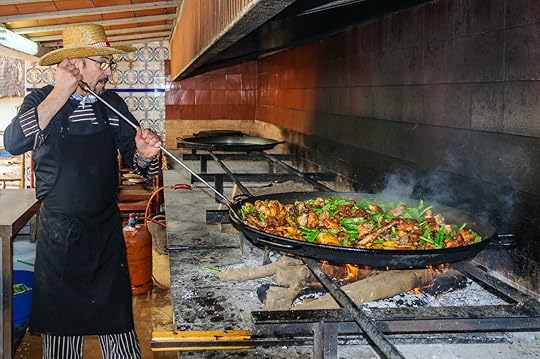
Valencia is Spain‘s third largest city, a vibrant Mediterranean hub, and it also happens to be one of the best hotspots for food lovers in Europe. The dining scene is thriving, and local restaurants celebrate regional favorites that are steeped in tradition. Most of the ingredients used in Valencia’s cuisine come directly from the surrounding countryside, such as paella rice that grows in fields just outside of city limits, and the tiger nut plant used to make the local drink horchata.
The options in this food-loving city are all worth a try. You can enjoy cured ham croquetas for lunch and risotto with shiitake mushrooms and Tuscan kale for dinner. Then there’s the iconic paella and gelato along with local favorite drinks like horchata and vermouth. Here’s where to try the best of Valencia’s regional flavors.
No visit to Valencia would be complete without paella at La Pepica

Photo: Marco Crupi/Shutterstock
The iconic rice dish originated on the northeast coast of Spain, and it’s a regional staple to this day. You can see the vast rice fields that stretch down from Valencia to the nearby village of Mareny Blau while traveling by train. Small, family-run restaurants use this locally sourced rice to provide a truly authentic flavor.
La Pepica, one of the oldest restaurants at Malva-rosa Beach, is something of an institution. The restaurant first opened its doors in 1998 and continues to welcome local families and visitors, both domestic and international. La Pepica’s specialty is seafood paella featuring scallops, mussels, and oysters, all garnished with saffron and olive oil. You can also opt for a rabbit paella, which is the preferred choice for those who don’t particularly enjoy seafood. A rich paella is best paired with a cold glass of local white wine. To top off the meal, the restaurant gifts patrons with a memento — a small bag of La Fallera rice so you can recreate the dish at home.
Where: Paseo Neptuno 6, 46011, Valencia Spain
Sip on a cold horchata while admiring Roman architecture
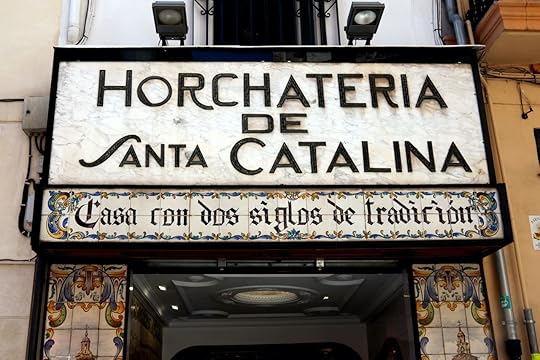
Photo: DbDo/Shutterstock
Another Valencian must-try is horchata de chufa. The milky, plant-based drink traces its European origins in Valencia as far back as the 13th century. Sweet and full-bodied, horchata is made of rice and comes in two varieties: liquid and granular, the latter of which has more texture, as the name implies. There is also tiger nut horchata, which is similar to sweetened almond milk but prepared with tiger nuts — a plant native to Southern Europe. The drink is commonly paired with a fartón, a thin pastry glazed with powdered sugar that complements the nutty horchata flavor.
Horchateria Santa Catalina is the place to have the best glass of horchata in Valencia, as the establishment upholds its century-old recipe. The original Santa Catalina shop is decorated with terracotta tiles depicting lovely Mediterranean landscapes and the interior feels charming and retro with its black and white floor mosaics. Recently, the iconic cafe opened a second location with a cozy outdoor patio just outside of the 7,000-year-old St. Mary’s Cathedral. This is arguably the best spot in town to people-watch while sipping on horchata.
Where: Plaça de Santa Caterina 6, 46001, Valencia, Spain
Sip on a local aperitif paired with tapas

Photo: Oxas/Shutterstock
Vermouth is a wine fortified with liquor, herbs, and spices. The best way to enjoy the fruity fortified wine is on the rocks or with a sifón (a spritz of soda water) and served with a slice of orange or an olive depending on its level of bitterness.
Tucked in a small street adjacent to San Nicolás Cathedral in the old El Carmen Quarter, Oliví is the top choice for vermouth and tapas. It’s a small bar where patrons drink while standing up and chatting. Oliví serves classic Valencian-made vermouth paired with olives, patatas bravas, or jamón, all of which are the absolute best accompaniment to the drink.
If you’re hungry, follow up your vermouth with a delicious meal just next door at La Salvaora. Here, you’ll find the quintessential Mediterranean entrees alongside a selection of local wine. The restaurant’s small entrance looks like a hole in the wall but opens up into an elegant dining room. The tasting menu offers candied baby beans, lentils in curry cream, and a traditional mini-burger with two types of mustard. Alternatively you can find daily specials that include a rice dish, often garnished with cured Iberian ham, pork, or kale, followed by a pork cheek with creamy potatoes and tempura salmon with brussels sprouts. Check out the modern twist on classic meals like risotto with imported shiitake mushrooms and Tuscan kale or the braised veal cheek with coffee demi-glace and creamy celery.
La Salvaora’s wine list is also exciting and extensive, featuring reds like the local Las Aves de Paso — a blend of 60 percent bobal and 40 percent cabernet sauvignon, and whites such as the sauvignon blanc and blanc de Trilogía.
Where: Carrer de Calatrava 4, 46001, Valencia, Spain
Satisfy your sweet tooth with gelato and nougat desserts

Photo: Heladerias Llinares & Turrones Palmira/Facebook
Though gelato originally comes from Italy, it’s a treat you don’t want to miss in Valencia.
Today, the best place to go for a waffle cone and a taste of the Italian ice cream is the family-run Heladeria Llinares. Established in 1930 by Sebastián Llinares Seva and his sons, Sebastián and José, the shop started out as a small, family-run enterprise and became the go-to gelateria in the city. To this day, the shop follows its secret recipe to deliver the same delicious gelato that patrons have been buying for years.
Some must-try flavors are the San Marcos Cake, Little Red Riding Hood, Jijona Nougat, Valencia CF, Meringue Milk, and the Choco Crunch. Additionally, the shelves are packed with nougat cakes, pastries, pure chocolate cake, chocolate nougat bars, and turrones (nougat bars with nuts) — another popular Valencian dessert.
Where: Carrer de l’Humanista Mariner 16, 46018, Valencia, Spain 
More like thisArt + ArchitectureValencia has some of the richest architecture in Spain. Here’s how to see it.
The post Valencia, the birthplace of paella, is a destination-worthy food city appeared first on Matador Network.

How COVID-19 changed Little Italys
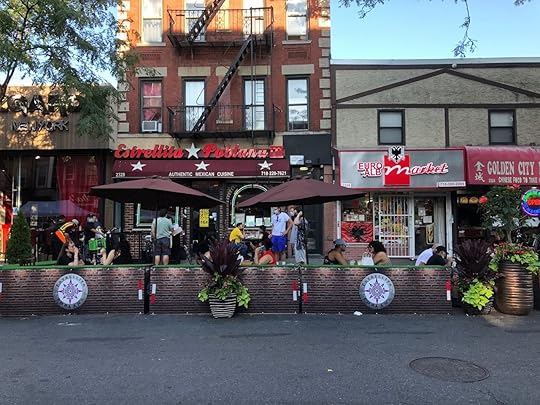
Peter Madonia is the third-generation owner of the more than 100-year-old Madonia Bakery on Arthur Avenue in the Bronx’s Little Italy. His family has seen a lot in the decades that they’ve lived and worked in the Bronx: Madonia’s grandfather opened the bakery in 1918 in the middle of the Spanish flu. The ensuing years brought on the Great Depression, World War II, and riots and unrest in the 1950s and ‘60s. But nothing has hit the neighborhood quite like the outbreak of the COVID-19 pandemic.
“When we had to close, it was like losing a piece of our soul,” Madonia, who also serves as the chairman of the Belmont Business Improvement District, says. “It was very much a big family in this neighborhood. And we lost our family overnight. So that was just really heartbreaking.”
For more than a century, the Bronx’s Little Italy had an ecosystem which included not just the family-owned, multi-generational bakeries, butcher shops, pasta shops, salumerias, and restaurants that populate the business district, but also the nearby Fordham University, Bronx Zoo, and New York Botanical Garden. As the lights went out on every type of business in March in New York, Madonia watched that well calibrated environment — which brought in tourists, local families, and students for shopping and eating — crumble. At first it didn’t seem like the neighborhood could recover.
“It made me really question whether we have longevity or if this was the beginning of the end,” he says.

Photo: Cemil Aksoy/Shutterstock
Little Italy neighborhoods across the country are especially vulnerable to the havoc that COVID-19 has wreaked on the United States’ economy. Many of the businesses that populate these neighborhoods have been operating for decades under the same families. Outside visitors are crucial to staying afloat: One million people passed through Manhattan’s Little Italy neighborhood for San Gennaro last year; the 2020 festival is canceled for just the second time in its 94-year history. With most travel still discouraged and social distancing protocols strictly enforced for everyone else, the results have been devastating for retailers and restaurants that depend on tourists for revenue. Back in July, The New York Times reported that the pandemic has “ravaged” the city’s “fragile small businesses” that “are reliant on repeat customers and foot traffic.”
Marco Li Mandri, chief executive administrator of the Little Italy Association of San Diego, has been working in the neighborhood for 25 years. When he started, there were just 13 restaurants and retailers. Today, there are 20 Italian immigrant-owned and -operated restaurants in the neighborhood. In all, businesses in the neighborhood employ around 6,000 people, according to a survey conducted by San Diego’s Little Italy in 2018.
“The overwhelming majority of our businesses are family owned and operated,” Li Mandri says. “They’re not publicly traded entities, and family businesses can’t just go three months without any revenue.”
Li Mandri recalls the “eerie” feeling of the neighborhood’s empty streets when Governor Gavin Newsom ordered all nonessential businesses to close on March 19. He was “devastated” by the news, but on May 8, the state released a five-phase plan that would allow California to gradually reopen hard hit businesses. At first, it seemed as though the worst of the pandemic had passed and that the state might soon return to normal. Then, California saw a sudden surge in cases. Newsom quickly backtracked his reopening plan and ordered that all restaurants revert to outdoor seating only. But this time, Li Mandri was prepared.
“We immediately worked with the mayor and the City Council to install outdoor dining at first only on Friday and Saturday night. But now it’s seven days a week,” Li Mandri says. “So now we’ve got [about] 23 restaurants that are all serving outdoors. People are starting to generate revenue again, bringing employees back, and it’s almost the way it was probably in early March before everything was shut down.”
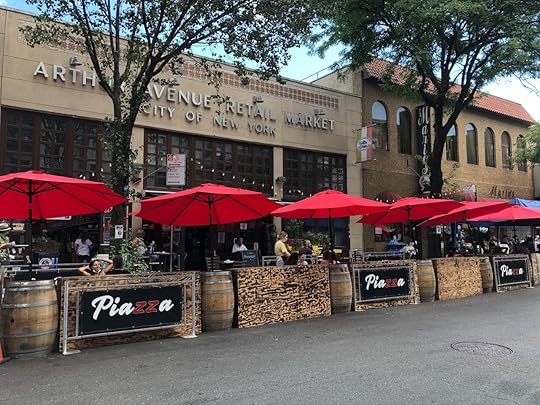
Photo: Search Results
Web Result with Site Links
Belmont Business Improvement District
Across the country, the restaurant industry has turned to the outdoors. New York State announced that outdoor dining could resume on June 4. The Bronx’s Little Italy partnered with Sam Schwartz, former NYC traffic commissioner, to create the Piazza di Belmont, a European-style outdoor area on 186th Street that includes more than 15 restaurants. According to Madonia, the Belmont BID was about “three or four weeks ahead of the curve,” when it came to planning an outdoor dining scheme for the neighborhood.
“What I was most impressed with was in 24 hours once the signal was given,” Madonia says, “that almost every restaurant in the neighborhood was out on the streets with something pretty clever and as attractive as they could make it as quickly as they could make it.”
The piazza has been a big hit in the neighborhood. Madonia says restaurants are seeing “a lot of new faces” who have dropped by to try the outdoor dining lifestyle.
“I think the notion of coming to a piazza, it gives people a little bit of hope,” he adds. “Given who we are culturally, it really resonated and stuck. If I have my say, I wouldn’t ever take this away because it’s a great vibe. They’re going to have to take me kicking and screaming to take it off the table once there’s dining inside again.”
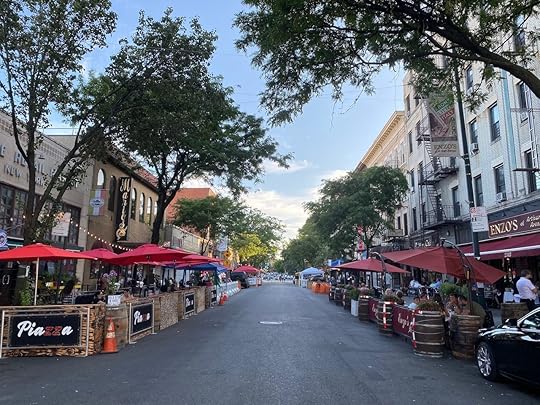
Photo: Search Results
Web Result with Site Links
Belmont Business Improvement District
Li Mandri has been traveling across the country visiting Little Italy neighborhoods in Chicago, Providence, Boston, and San Francisco, and he says that every single one has adopted the outdoor dining model in order to survive. In San Diego’s Little Italy, sanitation teams hand out masks and wipe down everything from trash cans to outdoor furniture, and there are Purell stations on every block. In the Bronx, the sanitation guidelines are equally as strict: There is hand sanitizer available at every restaurant, and employees have been tasked with cleaning parking meters, ATMs, and door handles. But Madonia says this system simply isn’t sustainable in the long term.
“[Outdoor dining] is not going to be enough to sustain them forever,” he sys. “They have to have indoor dining again at some point.”
It seems that a long road of recovery is ahead for the mostly family owned Little Italy neighborhoods across the US. Li Mandri predicts it will take at least five years — perhaps even 10 — for local economies to recover from the pandemic.
“We’re really dealing with unchartered territory at this point,” Li Mandri says. “How do you resuscitate from that? It was a body blow to everything.”
No matter how long it takes to return to “normal” — whatever that looks like post COVID-19 — there is no chance that Little Italy is a thing of the past. These neighborhoods have survived situations that seemed insurmountable before, after all. Madonia is confident the Bronx’s Little Italy will “tough it out” eventually. But organizers and leaders within these neighborhoods can only offer up so many masks and hand sanitizer. What they need in the long term, at least from Li Mandri’s perspective, is better planning and guidance from their politicians.
“We’ve got to learn how to live with this thing, because we can’t just stop the economy and start the economy and stop,” Li Mandri says. “It’s so destructive to so many different people for their livelihoods. So we’ll do whatever we can that is safe but we have to learn how to live with this.” 
More like thisCulture7 of the best Little Italys in America you probably haven’t been to
The post How COVID-19 has changed Little Italy neighborhoods across the US appeared first on Matador Network.

In-flight nut surplus amid COVID-19

Nuts are the quintessential airline snack, but with COVID-19 policies causing airlines to cut certain food services, millions of roasted, mixed nuts are finding themselves grounded.
Earlier this year, American Airlines stopped serving mixed nuts to passengers. That might sound like a relatively minor adjustment, but it’s actually dealing a major blow to the company that supplies the nuts.
GNS Foods has provided American Airlines with a blend of roasted and salted cashews, pistachios, pecans, and almonds for the past 30 years. The airline accounted for 70 percent of the company’s total nut sales. Now that nuts are temporarily off the menu, GNS Foods is finding itself with about 87,000 pounds of excess nuts.
Kim Peacock, owner of GNS Foods, told the Dallas Morning News, “We have pallets and pallets of nuts here. We didn’t know how long this was going to last. The airlines were in a state of disarray themselves and they didn’t know if they were going to be bringing them back or not.”
To handle the surplus, the company is getting creative, opening a retail store in Austin, TX and also selling mixed nuts online.
“After three decades [of] a great supplier partnership, it is painful to be left with inventory and supplier contracts,” said Peacock. “We’ve offered to bag the nuts into single-serve sizes, but that wasn’t well-received. Yet, on my last flight in first class, I was served a cheese, cracker, fruit and chocolate tray complete with plasticware. And of course I thought, ‘why can’t these be our nuts?’” 
More like thisAirports + FlyingThe best (and worst) airline food in the world, according to a pro airline food reviewer
The post Nut company has 87,000-pound surplus after airline cuts in-flight snack appeared first on Matador Network.

Luxury hygge campground in Japan
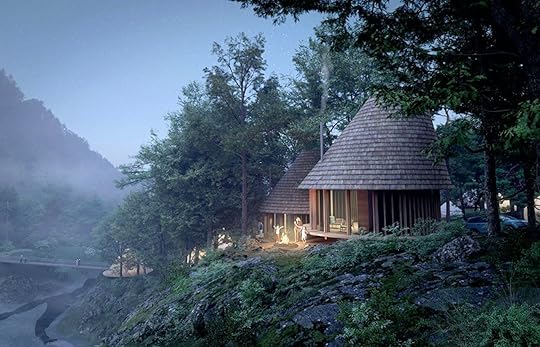
The Nordic concept of hygge means the feeling of living contentedly in the moment, and it’s certainly something to aspire to during these stressful times. A campground in Japan is using hygge as a design inspiration for a luxury campground, called “Nordisk Hygge Circles.” Intended to be a healing space for travelers, the campground is located at the base of a mountain close to waterfalls in the Ugaki natural area outside of Inabe.

Photo: Tredje Natur
The campground was designed by a Japanese-Danish team, the winner of a regenerative tourism competition launched by Danish outdoor gear company Nordisk. Its goal was to redefine luxury travel with a sustainable camping experience.
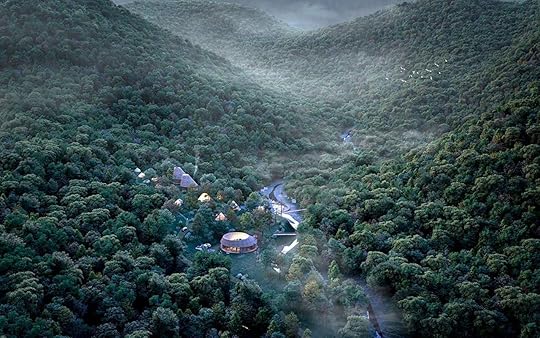
Photo: Tredje Natur
Third Nature, the architects working on the project, said in a press release, “The world ‘hygge’ is derived from ancient Nordic language, and at its core, we find two aspects that are of particular interest to the design team. It is about togetherness (hugga), and it is about reflection (hyggja).”
The park will consist of three main areas: an overnight zone with reservable circular cabins and glamping tents, a “learning field” where guests can take workshops inspired by nature, and an area for pitch-your-own-tent campsites.
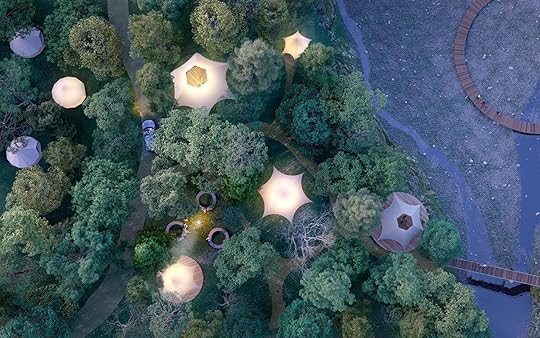
Photo: Nordisk Outdoor/Facebook
Erik J. Møller, CEO of Nordisk, told Business Insider that the park’s theme has been “reinforced, ot turbo-charged if you will, by the present worldwide pandemic. Nature is not sick and is really a refuge for many people right now.”
Nordisk Hygge Circles is set to open in the spring of 2021. 
More like thisCampingHow to secure a great last-minute campsite
The post This dreamy luxury campground in Japan is straight out of a storybook appeared first on Matador Network.

Where to see cactuses in the US
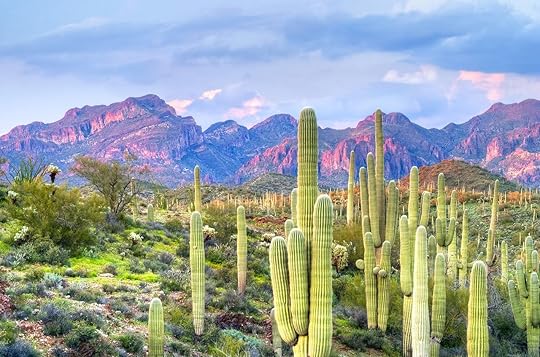
The American Southwest gets a lot of attention for the dazzling desert landscapes and rock formations of its national parks, monuments, and recreation areas, but travelers would be remiss not to zoom in on the region’s smaller natural wonders. It might be hard to take your eyes off the towering arches, spires, hoodoos, canyon walls, and sandstone buttes to look to the ground and take in the plants that grow there, but it’s well worth the effort.
According to the US Fish and Wildlife Service, there are about 1,400 species of cactus in the world, most of which are native to the Americas and the Caribbean. Many of the cactuses that grow in the American Southwest are unique to the region, carry historical and cultural significance for the local Indigenous people, and are of such resilient beauty, it’s hard not to feel in awe at the sight of them.
Plan your national park adventure around these prickly stunners for lessons in local botany, history, and culture, and an eyeful of some of nature’s most amazing flora.
The kingcup cactus
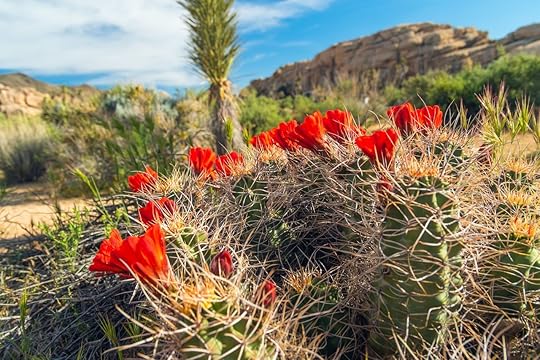
Photo: HannaTor/Shutterstock
Native to the Southwest, the kingcup cactus, also known as the claret cup cactus, is a small species of cactus that occurs on its own or in clusters. Each stem is barrel-shaped and can be up to 12 inches tall and 6 inches thick. The kingcup cactus sports long, straight spines, as well as vibrant red flowers that open every morning, last two or three days, and from which hummingbirds love to feed. The fruit of the kingcup cactus is also red and edible when ripe. Indigenous people of the Southwest traditionally ate the kingcup cactus by burning its spines off and mashing it to use it in baking or in the making of candies. The fruit was eaten raw.
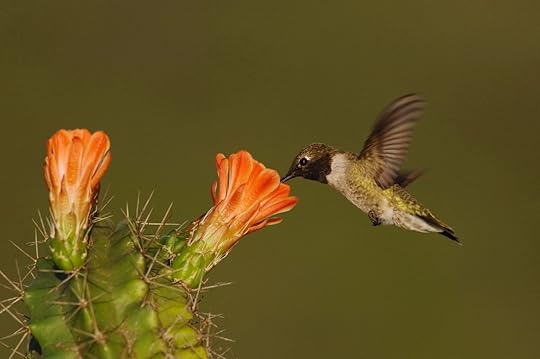
Photo: Danita Delmont/Shutterstock
You can see the kingcup cactus in rocky cracks, shrublands and conifer woodlands, and desert grasslands primarily in New Mexico, but also in Arizona, Colorado, Utah, Nevada, and California. To see the beautiful blooms, visit between April and June in the lower elevations and in June-July in the higher elevations.
The saguaro cactus
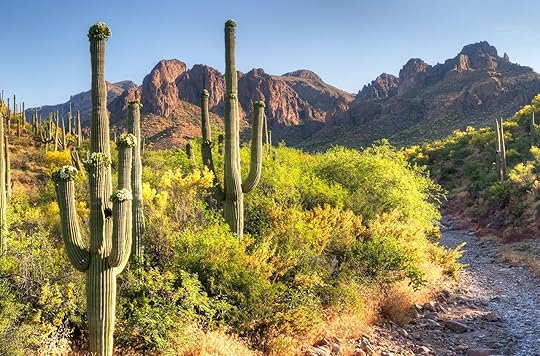
Photo: Anton Foltin/Shutterstock
A symbol of the Southwest, the saguaro cactus is a towering and spiny plant that is only found in parts of Arizona’s Sonoran Desert. The lifespan of the saguaro is thought to be between 150 and 175 years, and during that time, each saguaro can reach 40 to 60 feet in height. Saguaros develop branches starting 50 to 70 years into their lives, but it can take up to 100 years for the plant to grow an arm. Around year 35, they grow large white flowers usually at the top of its trunk or arms that attract many pollinators.
In the past, the Hohokam people of the Tucson area used the ribs of dead saguaros to construct their homes. The Tohono O’odham, who are thought to be the descendants of the Hohokam people, consider the plant sacred and, like their ancestors, use the fruit (red and produced in the summer) to make wine, jelly, and candies.
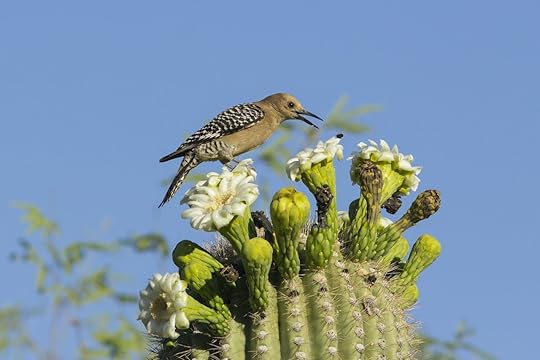
Photo: tntphototravis/Shutterstock
Visitors to the Sonoran Desert can witness the beautiful blooms that open at night and close in the afternoon between late April and early June, as well as the host of animals that make the saguaros their home, like the gilded flicker and Gila woodpecker who dig nests inside the cactus. Bald eagles have also been spotted nesting on saguaros.
The organ pipe cactus
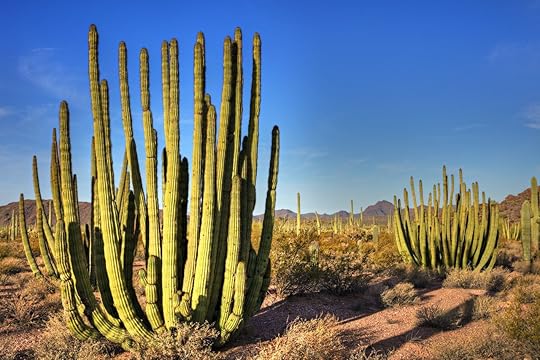
Photo: Anton Foltin/Shutterstock
In the US, the organ pipe cactus is found almost exclusively in Arizona’s Organ Pipe Cactus National Monument, where they grow on south-facing slopes in order to survive the frost of winter. They are found in large clusters and can reach 10 to 20 feet in height and resemble the pipes of a church organ. Like the saguaro, the organ pipe cactus can live a very long life (over 150 years) and produce white flowers around age 35. The blooms are visible at night until mid-morning during May and June every year and produce red fruit after that. The fruit can be eaten when ripe.
Cane cholla cactus
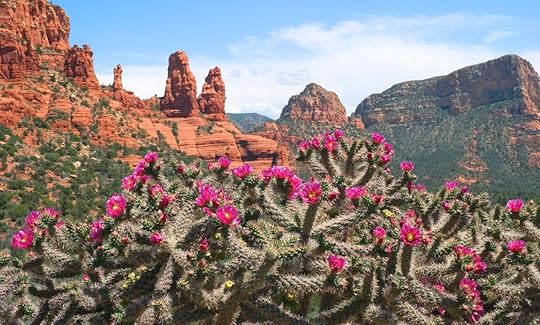
Photo: David M. Schrader/Shutterstock
Also called the tree cholla, the cane cholla cactus is native to the Southwest, more specifically from Arizona, New Mexico, Colorado, Texas, Oklahoma, and Kansas. One among seven species of cholla cactuses, the cane cholla grows into a shrub of up to eight feet in height and produces bright purple and magenta flowers in May and June, followed by conical yellow fruit in the summer.
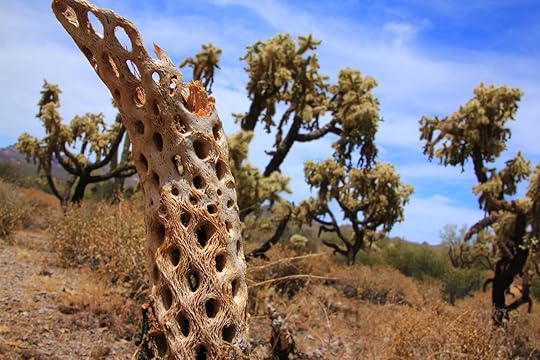
Photo: Drop Zone Drone/Shutterstock
Like all cholla cactuses, cane chollas are made of cylindrical segments attached to one another that detach when in contact with an animal. The spines are known to be incredibly painful when in contact with the skin and hard to remove (the use of a fine-tooth comb is necessary). Local Indigenous people used the fruit, to either eat it raw, dried, stewed, and even ground in a flour. When the plant dies, its elaborately patterned wood is repurposed to make items of furniture or canes, hence its common name.
The cane cholla is the most common cholla cactus in New Mexico and can easily be spotted in White Sands National Park and Petroglyph National Monument.
Fishhook barrel cactus

Photo: Karen S Jacobs Cook/Shutterstock
Like its name indicates, the fishhook barrel cactus has long hooked spines and is shaped like a barrel — and a big one at that. Measuring an average two feet in diameter and three to four feet in height, it can be as big as 30 inches thick and as tall as six to 10 feet. They can live between 50 and 100 years and during that time, produce red-orange flowers that bloom during the day from July to September, as well as yellow fruit afterward. Like the saguaro cactus, the fishhook barrel has a pleated aspect that allows it to stretch when it absorbs water. The fishhook barrel cactus is also known as the compass barrel cactus because it tends to lean toward the southwest.
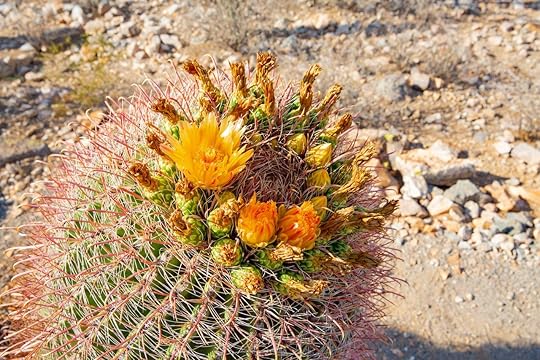
Photo: Traveller70/Shutterstock
People have been known to use the fishhook barrel cactus as a source of water in emergency situations (although it can create stomach issues, so this practice is for emergencies only). The flower, seeds, and the fruit were traditionally used in cooking by local Indigenous people.
The fishhook barrel cactus is almost exclusively found in south-central Arizona and can easily be spotted in Saguaro National Park, Tonto National Monument, Grand Canyon National Park, and Casa Grande Ruins National Monument.
Engelmann prickly pear cactus

Photo: Tobin Akehurst/Shutterstock
Prickly pear cactuses are extremely common throughout the US, with almost 40 species in the country. The engelmann prickly pear cactus, however, grows only in the Southwest with a range from central Texas through inland southern California.
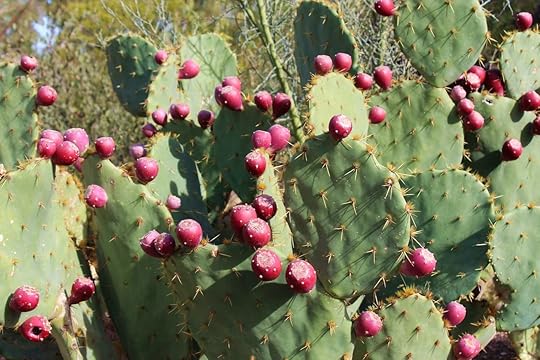
Photo: Tracy Immordino/Shutterstock
The engelmann has large, flat, rounded pads, and distinguishes itself from other prickly pear species thanks to its white spines, its yellow flowers that bloom in May and June, and the bright fruit (known as “tuna”) that follow. The engelmann can grow up to five feet tall and 10 to 15 feet wide.
The young pads can be eaten once the spines are removed and so can the fruit, but the raw seeds can lead to stomach issues. 
More like thisParks + WildernessThe 7 most fascinating flowers around the world you need to see in person
The post The tallest, spikiest, and most colorful cactuses you can see in the Southwest appeared first on Matador Network.

Best fall foliage not in New England

When many people think of fall foliage, images of Maine or Vermont come to mind. But there are a host of locations beyond New England to savor autumn’s hues. From the lake-filled Midwest to the South’s Appalachian range, the alpine landscapes in the Southwest to the vineyards of California, the options for marveling at leaves bursting in shades of gold, orange, and crimson are almost endless. While we suggest optimal viewing times to see the leaves turn in various locations, these are based on what’s typically expected. It’s a good idea to check weather forecasts and tap into local tips for best viewing weeks in a specific year.
1. Smoky Mountains, Tennessee

Photo: NaturalStock/Shutterstock
The Smoky Mountains of Tennessee are a spectacle of color for several weeks. Since the leaves turn first at the higher elevations as early as late September, later at lower elevations, progressively through the end of October, you have a bigger window of time for leaf peeping. The trees themselves also vary with the elevations, so you’ll be able to appreciate different tones above and below 4,000 feet. The Smoky Mountains are wonderful for hiking, so the best way to get out there is to amble through the forests ablaze in the color of carrots, lemons, and wine to a viewpoint to take it all in.
2. New River Gorge, West Virginia

Photo: Sean Pavone/Shutterstock
West Virginia’s New River Gorge, the Appalachians’ largest river gorge, is beautiful at any time of year, but fall is particularly special. Its diversity of tree species — among them beech, birch, sumac, locust, and oak — light up in every tone from dusty yellow to deep claret. A good way to appreciate it is to take the one-and-a-half-mile hike on the Long Point Trail to an overlook that will give you a fantastic view of the gorge, the bridge that spans it, and those lovely, multi-varied trees. Since you’re a little further south here, the best viewing weeks are usually the last two weeks in October.
3. Taos, New Mexico
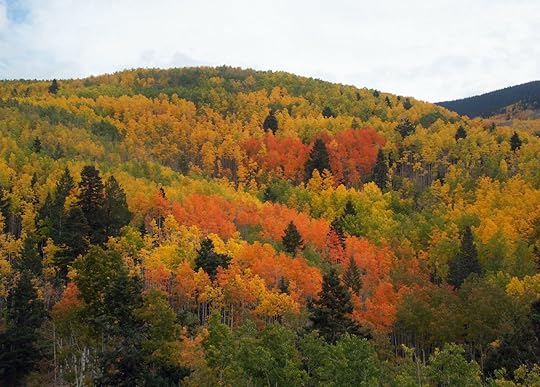
Photo: Terry W Ryder/Shutterstock
In a state as dry as New Mexico, you might not expect to see fall foliage. But aspen trees love high altitude, and Toas is nothing if not high. You’ll see the area’s groves of aspen trees light up the mountains in brilliant yellow and orange from the last week in September to the start of October. They’ll intermingle with evergreen ponderosa pines, making for a lovely mix of colors. There are plenty of other ways to enjoy your stay in Taos, including visiting the oldest continuously inhabited community in the country and enjoying some excellent New Mexican fare.
4. Aspen, Colorado

Photo: Mrs. Loh/Shutterstock
Aspen trees are the most widely distributed native trees in North America, and the US state they really thrive in is Colorado. That’s thanks to Colorado’s high elevation, the trees’ resistance to wildfires, and aspens’ tendency to be the first tree to repopulate any area that has been scorched by fire. And what better place to see them than in the town of Aspen? The best time to see the golden leaves of these white-barked trees is from mid-September to mid-October.
5. Napa and Sonoma valleys, California
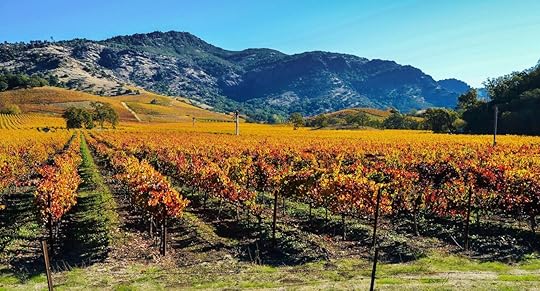
Photo: Alexandra Latypova/Shutterstock
Northern California’s mountain sides may be verdant all year, with their evergreen pines and redwoods, but in the wine country, its vineyards reflect the changing seasons. From Sonoma Valley to Napa Valley, the rows of grape leaves take on a bright golden hue. A good place to see it all is while driving along the Silverado Trail in Napa Valley, as you’ll get an overlook of the valley to your west. It’s a stunning contrast to the green hills beyond. If you’re in Sonoma Valley, our favorite place is West Dry Creek Road, north of Healdsburg, where you’ll pass vineyard after vineyard with their leaves aglow in autumn yellow. The best times to see these hues are in October and sometimes lasting into early November.
6. Upper Peninsula, Michigan

Photo: SNEHIT PHOTO/Shutterstock
To folks in Michigan, it’s no surprise that the Upper Peninsula is one of the best leaf peeping spots in the country. The region’s beech, birch, maple, oak, and hemlock trees light up in vibrant reds, oranges, and golds. Marquette is an ideal spot to take in views of Lake Superior and the multicolored landscape. If you’re feeling energetic, you can even summit Marquette Mountain for a sweeping vista. Yet further north, on the Keweenaw Peninsula, you get water in either direction, picturesque towns, and those brilliant colors. Go in late September to mid-October.
7. Door County, Wisconsin
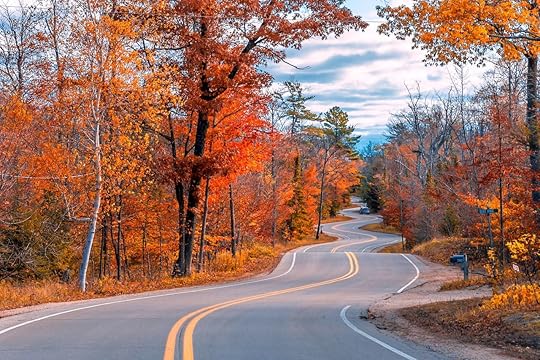
Photo: Nejdet Duzen/Shutterstock
Door County is already the perfect destination for a weekend road trip, and the fall is a particularly great time to visit. With spruce, walnut, and ash trees, along with various types of maple trees and plenty of evergreen pines added to the mix, the woodlands of Door County burst with an array of colors come autumn. Drive along Highway 42 and go through Peninsula State Park, enjoying stunning leaf views along the way. If you prefer to hike, you can walk along the bluffs in the same Peninsula park or trek to the Old Ski Hill Overlook in . 
More like thisRoad TripsSorry, summer. Fall is the ultimate road-tripping season.
The post 7 unexpected and uncrowded places in the US to see fall colors appeared first on Matador Network.

Matador Network's Blog
- Matador Network's profile
- 6 followers



